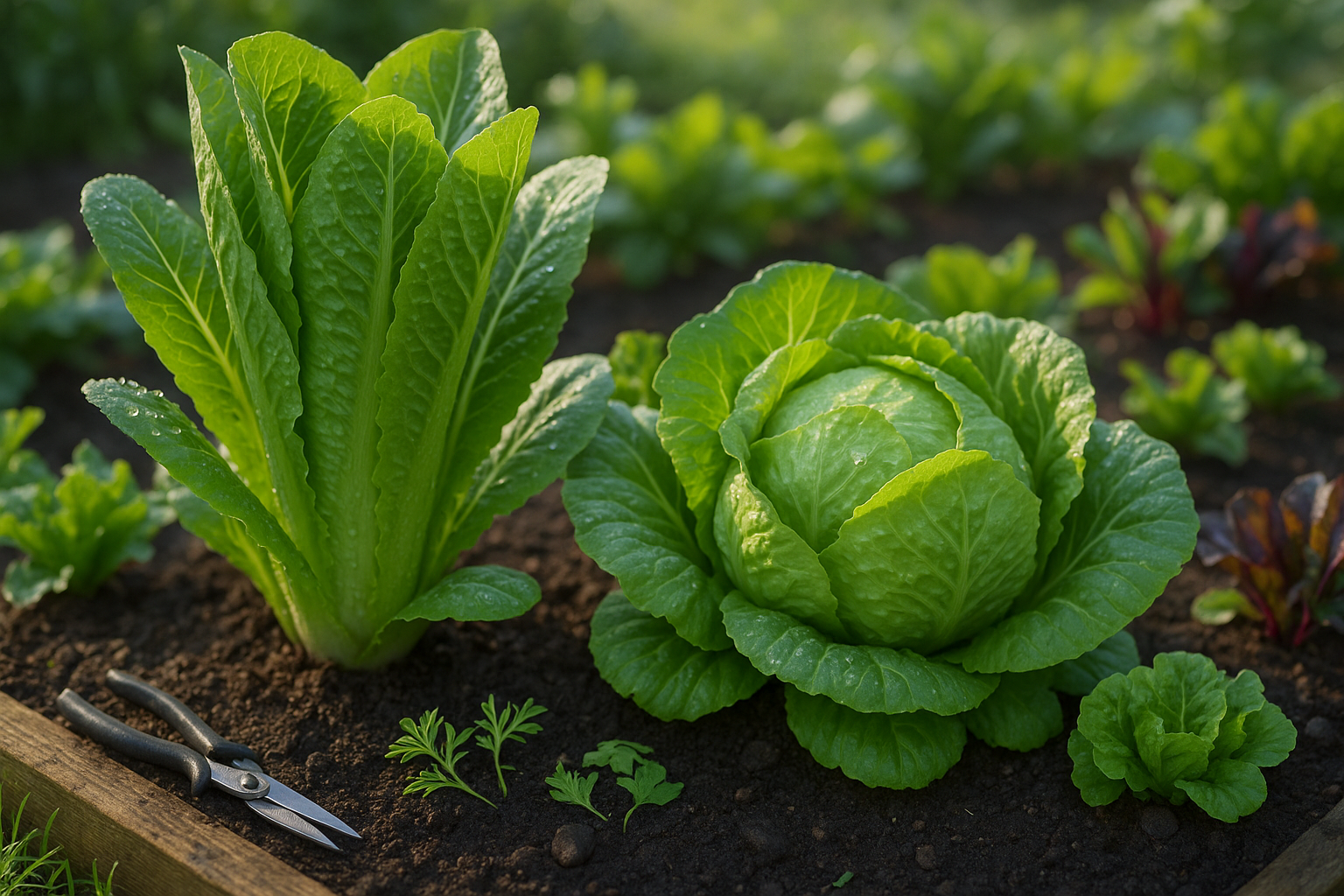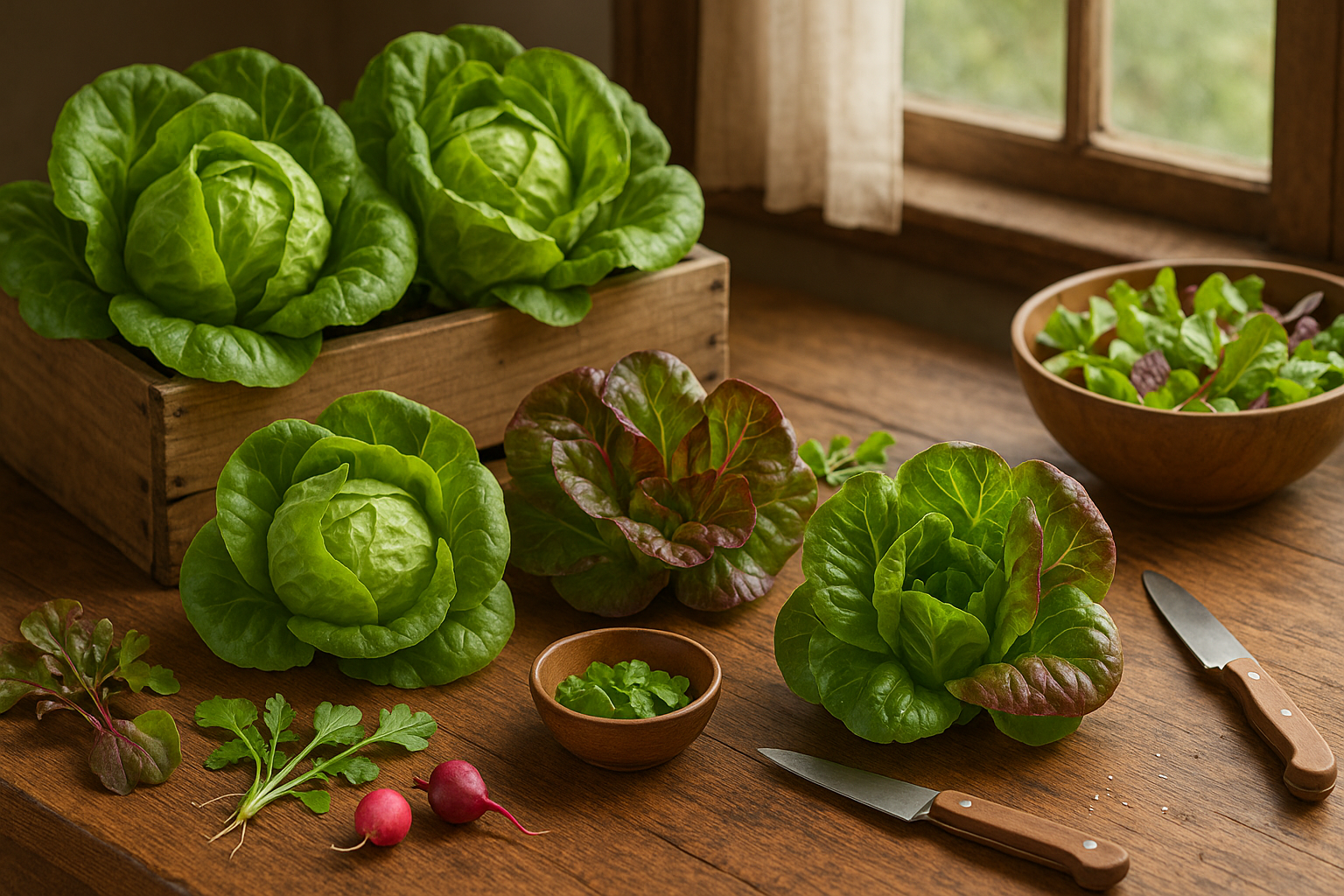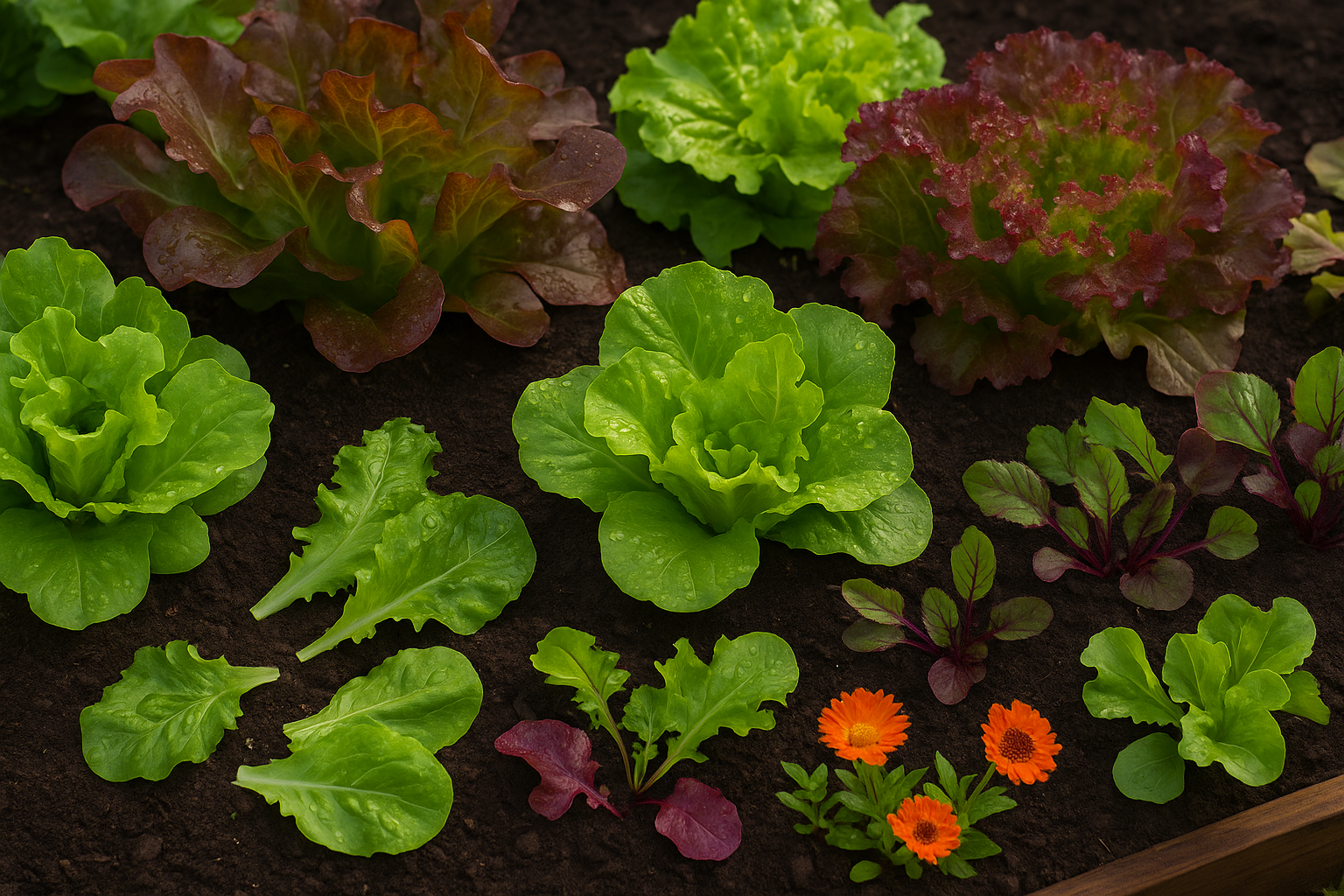Introduction to Lettuce Varieties
Choosing the best lettuce varieties can truly make or break your gardening or farming experience. Whether you’re growing for your family’s salad bowl, prepping for crisp and colorful wraps, or aiming to supply a local market, selecting the right lettuce variety is a crucial first step. The decision isn’t just about what looks pretty in your garden; it’s about finding a variety that thrives in your specific climate, fits your flavor preferences, and matches how you plan to use it. For example, if you live in a hot climate, heat-tolerant leaf lettuces might be your best bet, while those craving crunchy Caesar salads may lean toward classic Romaine.
In this post, we’ll guide you through ten of the best lettuce varieties for both new gardeners and seasoned growers managing larger plots. From timeless classics like Butterhead and Romaine, valued for their familiar flavor and texture, to bold selections such as Red Sails and unique speckled varieties that stand out at market stands, there’s a lettuce here to suit every taste and purpose. Expect practical tips for each type, including insights on flavor, preferred growing conditions, and the best ways to use them in the kitchen. You’ll finish ready to grow a lettuce harvest that’s both delicious and rewarding, no matter your gardening goals.
Crisp & Crunchy

When it comes to crisp, refreshing greens for your garden and kitchen, Romaine and Iceberg lettuces are classic choices—each with its own perks. Gardeners often find Romaine surprisingly easy to grow, thriving in a range of climates from cool spring to mild fall. Its tall, sturdy heads resist bolting better than many other lettuce types. Iceberg, on the other hand, prefers cooler conditions and rewards growers with dense, crunchy heads but can be a bit fussy in hot weather.
In home gardens, Romaine reliably produces through varied temperatures, while Iceberg performs best when planted in early spring or late summer. For the kitchen, Romaine’s deeper flavor and upright leaves make it the star of Caesar salads, sturdy wraps, and even grilled dishes. Iceberg’s mild, sweet crunch is unbeatable in burgers, chopped salads, and tacos, adding refreshing texture wherever you need it.
Nutritionally, Romaine is a winner—high in vitamins A, K, and folate. Iceberg, though lower in nutrients, still delivers hydration and a calorie-light crunch. For storage, both benefit from washing, then wrapping in a damp paper towel and keeping inside a bag in your crisper; this can extend freshness for over a week.
When choosing seeds, look out for popular Romaine varieties like Parris Island Cos or Little Gem. For a twist on Iceberg, try Great Lakes or Crispino. Whether you crave robust Romaine or classic Iceberg, both lettuces bring flavor and crunch to your table and color to your garden.
Tender & Buttery

Butterhead lettuces—like Boston, Bibb, and the increasingly popular Little Gem—are loved for their ultra-soft, buttery leaves and mild, sweet flavor. Boston and Bibb share many traits, but Boston heads are often larger and looser, making them perfect for big, leafy salads and as showy lettuce cups for elegant appetizers.
Bibb, sometimes called Buttercrunch, is smaller and a bit more tender, ideal for individual portions, wraps, or even mini sandwiches. Little Gem is the smallest, with compact, crisp heads and a flavor that’s pleasantly sweet, almost nutty.
These tender lettuces need rich, well-drained soil and moderate watering—think morning sun and afternoon shade, especially if you live in a hotter climate. For the best texture and taste, harvest when the heads feel full but still tender—about 55 to 70 days from planting for Boston and Bibb, and as little as 30 days for baby Little Gems.
Butterhead types are happiest in cooler temperatures, so plant early in spring or late summer. Gardeners can tuck them into raised beds, window boxes, or edge them along garden borders for easy picking.
On the plate, Boston and Bibb are buttery bases for chicken or tuna salads, while Little Gem shines in crunchy Caesar salads or as crisp, edible scoops for dips and spreads. Try grilling halved Little Gem for a smoky twist. Their gentle flavors and plush texture make these lettuces a treat fresh from the garden or farm stand, elevating simple meals into something special.
Looseleaf & Oak Leaf Varieties

Looseleaf lettuces are a top pick for new gardeners thanks to their fast growth, forgiving nature, and the ability to harvest leaves as needed without uprooting the plant. This “cut-and-come-again” feature means a single sowing can provide salad greens for weeks, making them both practical and rewarding.
Among these, Oak Leaf varieties stand out with their distinctively lobed leaves, coming in beautiful shades ranging from deep burgundy to vibrant green. Oak Leaf, like the tender Red Oak and classic Green Oak, offers a mild, slightly nutty flavor that brightens any salad.
Other looseleaf types such as Salad Bowl, Black Seeded Simpson, and Lollo Rosso bring their own unique colors, textures, and flavors—think frilly edges and subtle spicy notes.
For a visually striking and flavorful salad garden, try mixing red and green Oak Leaf with the rosy curls of Lollo Rosso and the pale, buttery leaves of Buttercrunch.
Planting several varieties together not only pleases the eye but also extends your harvest window, as different types mature at slightly different times.
Start with a diverse looseleaf mix to enjoy vibrant, homegrown salads with next to no fuss, all season long.
Specialty Varieties

Specialty lettuces like radicchio, frisée, and endive add a punch of character to any plate, thanks to their striking looks and bold flavors. Radicchio’s vibrant purple leaves and white veins make salads pop, bringing a pleasantly bitter edge that pairs perfectly with sweet fruits, creamy cheeses, or a drizzle of honey-balsamic vinaigrette.
Frisée, a type of chicory with frilly, pale-green leaves, offers both a tender crunch and mild bitterness, making it ideal in classic French salads like salade lyonnaise with bacon and poached egg.
Endive, whether Belgian or curly, delivers a crisp bite and slightly nutty profile; Belgian endive’s tight, pale heads work well as edible “boats” for appetizer fillings, while curly endive excels in mixed salads or sautéed as a side.
Cultivating these specialty greens isn’t too difficult with cool weather, consistent moisture, and fertile, well-draining soil, but be aware that they’re prone to bolting in high heat, which can intensify bitterness.
To tame bitterness in the kitchen, try soaking leaves briefly in ice water or pairing these greens with rich flavors like roasted nuts, smoked fish, citrus, or grilled meats.
Growing your own allows for selective harvesting—pluck outer leaves and let the plant continue producing, which is rewarding for any kitchen gardener.
Whether raw, grilled, or gently wilted, these European relatives bring texture, color, and complexity that standard lettuce simply can’t match.
Salad Mix Must-Haves
If you’re looking to grow vibrant, tasty salads right at home, consider starting with mâche and arugula—two salad greens that thrive in containers and deliver quick results. Mâche, also known as corn salad, is loved for its velvety, spoon-shaped leaves and mild, slightly nutty flavor. It germinates quickly—often in under two weeks—and can be harvested just three to four weeks after sowing.
Arugula, on the other hand, adds a peppery kick and a bit of crunch, making it a favorite for adding zing to salads. It matures quickly as well, allowing you to pick baby leaves as soon as three weeks after planting.
Try Mesclun Blends for More Variety
For a broader range of flavors and textures, try sowing mesclun blends. These pre-mixed seeds usually combine tender lettuces, spicy mustards, Asian greens, and sometimes even edible flowers. With mesclun, you get eye-popping variety—think sweet, bitter, tangy, and spicy all in one bowl—plus the convenience of harvesting as soon as the leaves reach 3-4 inches tall, typically in just 3-5 weeks.
For the freshest mix, snip leaves with scissors just above the soil and enjoy continuous harvests that keep your salads interesting and your kitchen stocked.
Tips for Growing and Enjoying Lettuce at Home or on the Farm
Growing healthy lettuce starts with rich, well-draining soil—mix in plenty of compost to boost nutrients and improve texture. Lettuce thrives with 4–6 hours of sunlight daily but appreciates some afternoon shade during hot spells to prevent wilting.
Keep the soil consistently moist but not soggy; using a soaker hose or drip irrigation helps maintain steady hydration. For ongoing harvests, try succession planting by sowing new seeds every two weeks so you always have fresh leaves coming up.
Extend your growing season by using row covers or cold frames to protect young plants from chilly nights or unexpected frosts, especially in early spring or fall. Watch for aphids and slugs—pick them off by hand or use neem oil as a safe deterrent.
Harvest lettuce early in the morning for crisp, sweet leaves, and store them dry in the fridge inside a perforated bag. Fresh-picked lettuce livens up salads, sandwiches, and wraps for a true garden-to-table experience.
